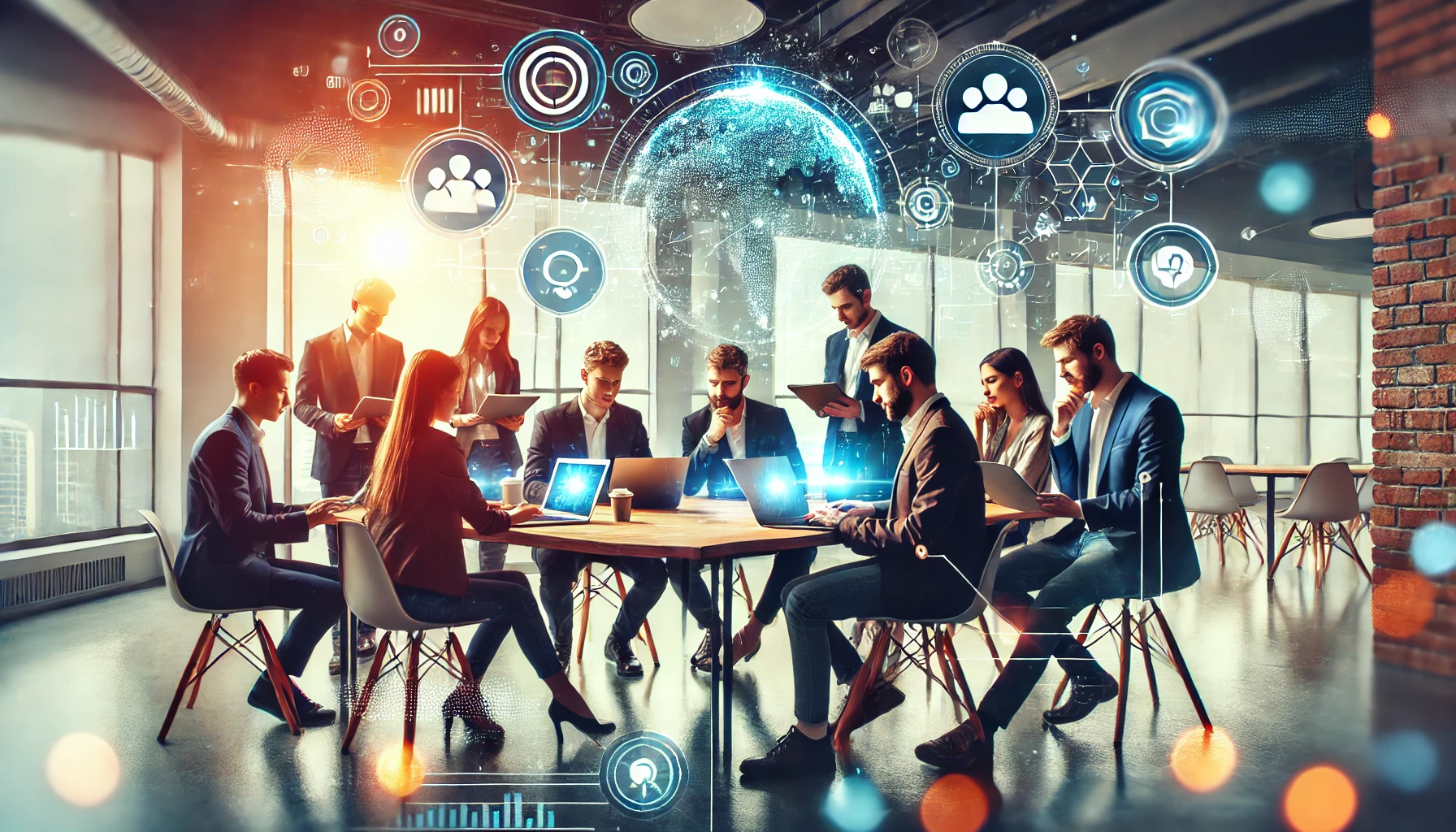Introduction
organic search vs paid search is very essential in the contemporary world for Search engine visibility, where traffic and branding are major determinants of a website’s success. When discussing search engine strategies, understanding organic search vs paid search becomes crucial. Since companies are working day and night to get the best online visibility, it is all the more important to understand these approaches. Organic search optimization and paid search advertising are both components of search engine marketing (SEM) , though the two work in very distinct fashion. Whether you are targeting pay per click campaigns or are working on organic traffic increase , having clues when and how to apply one or the other can be a real game changer.
In this guide, we’ll explain the difference between organic and paid search, describe the top tactics for each, and discuss how businesses can use both approaches to achieve greater success.
The Role of Search in Modern Marketing: Organic Search vs Paid Search
It is important to state that trends in searching information in internet have significantly changed in recent period. Today search engine such as Google is not only a search engine that seeks to find answers to question but a platform that leads business to prosperity. Globally, people perform searches for products, services or even information in the internet with each search amounting to billions. Before we delve deep into the specifics of our analysis it is important for us to understand the differences between Organic Search Optimization and Paid Search Advertising – two fundamentally different constructs that hold different promise and presenting different prospects for businesses.
Even though paid search can bring fast and tangible results using ads, organic search has to be developed gradually and it implements constant long-term approaches to appear on the lists of search engine results. Both methods can increase your brand awareness; however, knowing the right timing of using either method is vital for search engine marketing.
Understanding Organic Search and Paid Search
What is Organic Search?
Organic search is the set of results that are given in the search engine when the user enters a question. These outcomes are as a result of the search engine mechanisms which factor content relevance, quality and its source from authoritative websites. Organic search optimisation entails the best practices for optimisation such as keyword research, content writing, backlinking and on-page search engine optimisation though it aims at enhancing the rankings of the site in theses organic lists.
Organic search is initiatives such as producing quality content, the crafting of the website in a way that provides a good user experience and ensuring that it implements the right SEO techniques . The major advantage of organic search is that the traffic is ‘paid’ for with money but not actually purchased in the traditional sense and to see large ranking improvements in the search engines, you will need to invest a lot of time and effort.
What is Paid Search?
Contrarily, paid search , is also referred to as pay per click or PPC, and you pay the search engines to place your adverts in the search engine results. They auction off keywords and place their ads on top or bottom of the Search Engine Results Pages. These are advertised as sponsored or ad and are distinguished from the other results that appear in the search.
Paid search enables business persons to concentrate on specific keywords and get in touch with their audience within the shortest time. The model goes by the slogan ‘pay per click’ which means that the only time you pay is when someone has clicked on your ad. Paid search strategies relies on bidding, developing great copy and ensuring that the landing pages convert fully.
Key Comparisons: Organic Search vs Paid Search
While both organic search and paid search serve the purpose of driving traffic to websites, there are several important distinctions:

Organic Search Optimization
Organic search optimization is a set of processes, which contribute to the increase in the popularity of Internet sites with certain search queries among the results of Web listings. A successful organic search strategy requires ongoing efforts in various areas:
– On-page SEO : This involves the on-page succeeding factors on your site such as titles and descriptions, headings or meta descriptions, images, and internal linkages.
– Content creation : Google loves sites that are clinically……useful, pertinent and stimulating. Many experts consider organic ranking improvement as one of the factors that can be influenced through updating one’s site with fresh content that serves the users well.
– Backlink building : Only linkages from other quality sites with relevance to your content will help improve your ranking in the search engine results.
– Mobile optimization : Since people are now using their mobile phones to call for serivces, having a website that is mobile will help keep your search engine presence .
Seven Tools for Organic Search Optimization
Below, you will find severalkeyword research tools and SEO tools that you may find beneficial in optimizing your SEO Organic results. Popular tools include:
– Google Search Console : Helps analyze the effectiveness of your website in a search engine result page.
– Ahrefs : An all-encompassing SEO toolkit for monitoring backlinks together with assessing competitors.
– SEMrush : Provides keyword research, backlink analysis and affiliate analysis.
– Yoast SEO : An SEO tool that is designed to assist with the on page SEO of most WordPress based websites.
These tools are very useful when it comes to analyzing keywords, measuring the results of the organic search and strategizing future developments in SEO.
Paid Search Optimisation
Whereas organic search is permanently oriented toward the long era, paid search advertising enables businesses to achieve their target audience momentarily. Using PPC campaigns , business people can bid for certain keywords and their advertisements appear right at the top of the search page and this gives the much needed visibility.
Effective PPC marketing tactics involve market knowledge, keyword identification, ad creation and landing pages development for conversions. There are two major platforms used under paid search advertising; these include Google Ads and Bing Ads.
How To Develop Your Pay-Per-click Strategies
The other pre-campaign strategy that needs to be taken before engaging in a PPC campaign is to factor keyword research and well written ad copy. The bidding process should also have been done carefully to prevent having to bid fiercely for such competitive keywords. Here are some key steps in planning a successful PPC campaign:
- Conduct keyword research : High Converting Keywords: When it comes to looking for high converting keywords, you can use the Google Keyword Planner as well as Ahrefs.
- Write compelling ad copy : Create Beautiful & Effective Ads that can communicate the gains to be had from your service or product.
- Optimize landing pages : Always make sure that your landing pages are properly optimized for conversions and that there are proper CTA’s and related content.
- Monitor and adjust : Continuously analyze your advertising campaigns and adapt keywords during your ad purchase, bids and your ad text depending on your gathered figures.
Most Affordable form of Paid Advertisement Placement
The most crucial point for paid search advertising is that it provides full control over the budget. While you may not have a large budget to work with, it is quite possible to make great improvements if you are picky with your keywords and set your ads up for CTRs.
When Use Organic Search vs Paid Search
When to Use Organic Search
If your objective is to drive sustainable, organic traffic , then it makes sense to invest in organic search. Organic results give consistency in visibility and more so, in the long-run, are more affordable than paid ones. It is arguably most advantageous to companies with quality content, good brand equity and plenty of time to dedicate to SEO.
When to Use Paid Search
Paid search ideal for firms whose objective is to be found almost instantly or if clearly addressing very competitive markets. If you have a promotion or a new product which you want to popularize immediately, PPC campaigns will help to bring traffic. And paid search also is suitable for special niches where the free competition is high, and the site can hardly rank free.
Integration of the Organic Search vs Paid Search
The best approach is therefore a hybrid approach in that it incorporates natural and paid search. If PPC efforts are combined with focused SEO efforts, the field can be covered much more extensively by businesses. For instance, you can utilize the PPC techniques for creating direct traffic to a site and at the same time, invest in Search Engine Optimization for creating the long-term traffic.
Tools and Resources for Search Engine Marketing
In other words, for businesses to excel in making efforts in both organic and paid search, they require the proper tools. Here are some key resources to help you enhance your search engine marketing strategy:
– Google Analytics : Monitor Website traffic Source, Conversion rate, and cheap and expensive tricks that work.
– Moz : Provides tips on how to find keywords, and build links for your website, SEO tools.
– SpyFu : Useful for dissecting rivals’ PPC and Search Engine Optimization.
– SEMrush : Offers a complete range of functions for both SEO and PPC.
– Uber suggest : A user-friendly tool for keyword research, content ideas, and SEO performance tracking.
Conclusion
Making distinction of organic search and paid search is very important if a business is planning to improve its standings online. Organic search optimization is a long-term strategy that pays off over the long-term, although paid search advertising gives results immediately and targets only a specific audience. When integrating both methods, organisations can establish an effective search engine marketing strategy that will ensure constant traffic to its sites and therefore high returns.
FAQs
5. What is the primary difference between PPC vs SEO (Organic Search vs Paid Search)?
PPC (Pay-Per-Click) involves paid advertisements that appear on search engine results pages (SERPs), while SEO (Search Engine Optimization) focuses on improving your site’s ranking in the organic, unpaid search results.
6. How can organic ranking improvement be achieved?
Organic ranking improvement can be achieved through SEO strategies such as keyword optimization, creating high-quality content, building backlinks, and enhancing website usability and performance.
7. What tools are best for conversion tracking in PPC campaigns?
Tools like Google Ads Conversion Tracking, Google Analytics, and Unbounce are excellent for tracking and optimizing conversions in PPC campaigns.
8. What are the advantages of unpaid search results over paid strategies?
Unpaid search results, or organic listings, provide long-term visibility and build trust with users. Unlike paid ads, organic results continue to drive traffic even after you stop investing in optimization.
9. How do search engine algorithms impact both organic and paid efforts?
Search engine algorithms determine the ranking of pages in organic search and the placement of paid ads in SERPs. Understanding these algorithms is key to optimizing both SEO and PPC campaigns effectively.


























